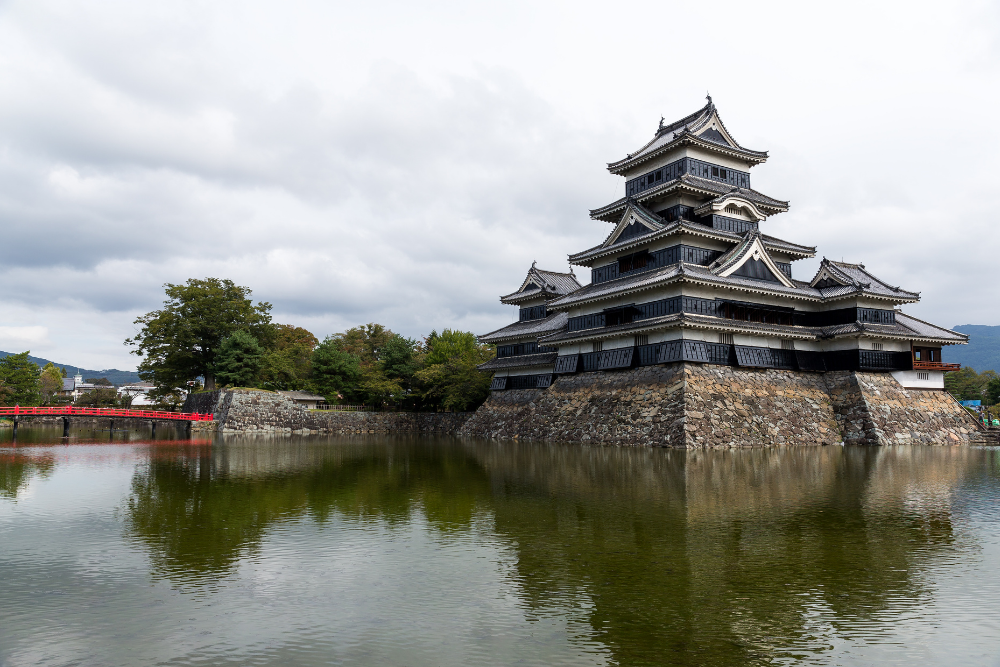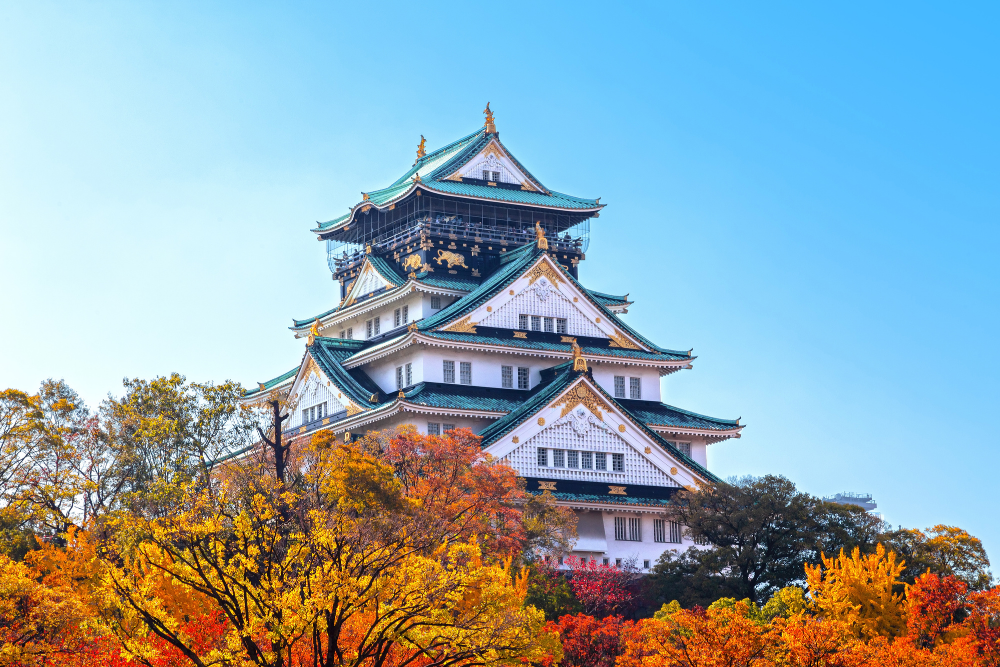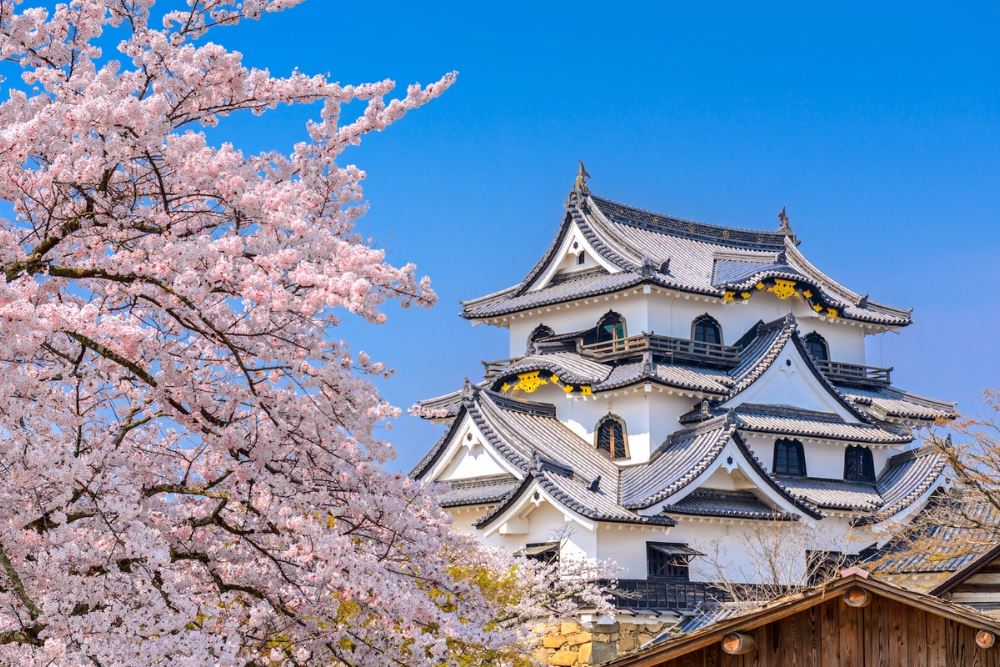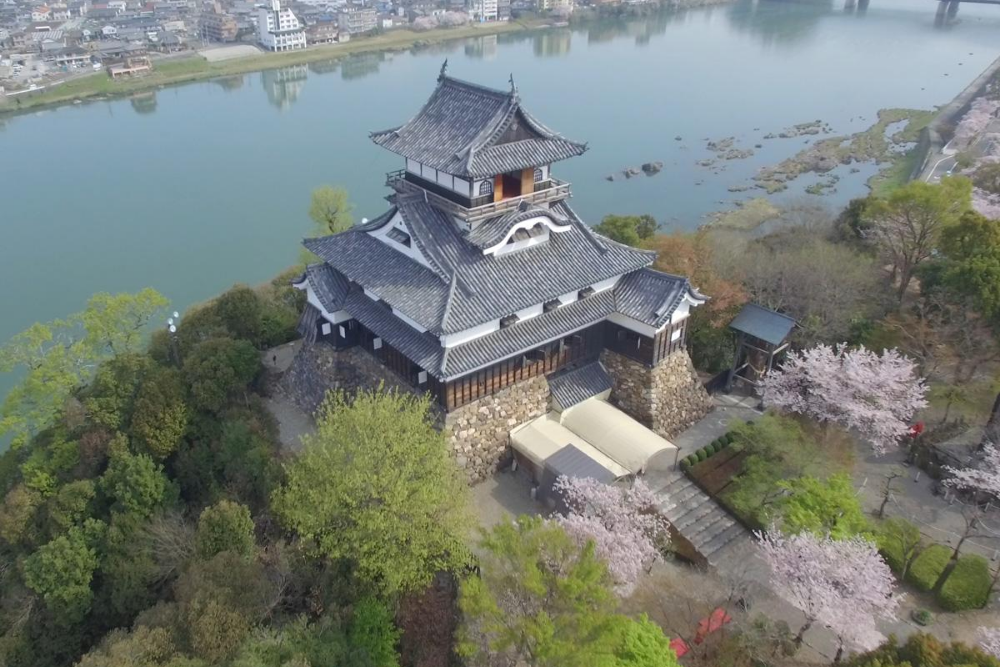Japan’s castles are timeless symbols of samurai history, architectural elegance, and cultural heritage. Unlike European stone fortresses, Japanese castles feature wooden structures, curved roofs, intricate designs, and breathtaking landscapes. Many of these castles were originally built for strategic military defense, but today, they stand as historical landmarks, offering visitors a glimpse into Japan’s feudal past.
From the majestic Himeji Castle to the picturesque Matsumoto Castle, this guide explores Japan’s most beautiful castles that every traveler should visit.
1. Himeji Castle: Japan’s Most Iconic Castle
📍 Location: Hyogo Prefecture
🏯 Also Known As: “White Heron Castle” (Shirasagi-jo)
Why Visit?
Himeji Castle is Japan’s most famous and best-preserved feudal castle, designated as a UNESCO World Heritage Site. Its brilliant white exterior, multi-tiered structure, and intricate wooden interiors make it a masterpiece of samurai-era architecture.
Highlights:
- Majestic Main Keep (Tenshu-kaku): Standing 46 meters high, offering panoramic views.
- Complex Defense System: A maze-like structure designed to confuse enemies.
- Sakura Season (April): The castle is breathtaking when surrounded by cherry blossoms.
Best Time to Visit:
- Spring (March–April) for cherry blossoms
- Autumn (October–November) for colorful foliage
2. Matsumoto Castle: The “Black Crow” of Japan
📍 Location: Nagano Prefecture
🏯 Also Known As: “Crow Castle” (Karasu-jo)
Why Visit?
Matsumoto Castle is one of Japan’s few remaining original castles, with a striking black facade and a beautiful moat reflecting the towering keep. Built in 1593, it is Japan’s oldest surviving five-tiered castle.
Highlights:
- Dark Wooden Exterior: Nicknamed “Crow Castle” due to its black lacquered walls.
- Interior Samurai Artifacts: Authentic samurai armor, weapons, and war relics.
- Spectacular Views: The castle offers a breathtaking backdrop of the Japanese Alps.
Best Time to Visit:
- Winter (January–February): Snow-covered landscapes create a fairy-tale atmosphere.
- Spring (April): Cherry blossoms bloom around the moat.
3. Osaka Castle: A Symbol of Power and Rebirth
📍 Location: Osaka Prefecture
🏯 Built By: Toyotomi Hideyoshi in 1583
Why Visit?
Osaka Castle played a crucial role in Japan’s unification during the late 16th century. Though the original structure was destroyed, the modern reconstruction preserves its historic beauty while incorporating a museum inside.
Highlights:
- Golden Ornaments & Majestic Keep: The exterior is adorned with gold leaf and intricate carvings.
- Osaka Castle Park: A massive park featuring cherry blossoms, plum gardens, and a moat.
- Samurai & War History Museum: Interactive exhibits on Japan’s Warring States period.
Best Time to Visit:
- Spring (March–April): Best for cherry blossoms.
- Autumn (October–November): Stunning red and gold foliage.
4. Hikone Castle: A Hidden Gem
📍 Location: Shiga Prefecture
🏯 UNESCO Status: National Treasure
Why Visit?
Hikone Castle is one of Japan’s original 12 castles, retaining its authentic Edo-period charm. It is a rare, well-preserved wooden castle with a rich samurai heritage.
Highlights:
- Authentic Edo-Period Architecture: Unlike reconstructed castles, Hikone is original.
- Hikonyan Mascot: A beloved samurai cat character welcomes visitors.
- Hikone Castle Museum: Features samurai armor, weapons, and artifacts.
Best Time to Visit:
- Spring for cherry blossoms
- Autumn for fall colors
5. Hirosaki Castle: The Cherry Blossom Paradise
📍 Location: Aomori Prefecture
Why Visit?
Hirosaki Castle is famous for its incredible cherry blossom festival in Hirosaki Park, where 2,600 sakura trees bloom around the moat. The castle’s three-story keep is unique, standing against a dramatic mountain backdrop.
Highlights:
- Japan’s Best Cherry Blossoms: Hirosaki Park hosts one of Japan’s top hanami (flower-viewing) spots.
- Original Edo-Period Keep: One of the few castles with an intact wooden main tower.
- Mt. Iwaki Views: A stunning mountain backdrop enhances its beauty.
Best Time to Visit:
- Spring (Late April – Early May) for cherry blossoms.
6. Inuyama Castle: Japan’s Oldest Castle Keep
📍 Location: Aichi Prefecture
🏯 Built: 1537
Why Visit?
Inuyama Castle is one of Japan’s oldest surviving castles, offering incredible views of the Kiso River. It retains an original wooden interior, making it a rare authentic samurai-era experience.
Highlights:
- Samurai-Era Construction: An original 16th-century wooden keep.
- 360-Degree Panorama: Stunning river and city views from the top floor.
- Nearby Attractions: Close to Meiji Mura, an open-air museum of historic architecture.
Best Time to Visit:
- Spring and autumn for scenic beauty.
7. Kumamoto Castle: The Warrior’s Stronghold
📍 Location: Kumamoto Prefecture
Why Visit?
Kumamoto Castle was one of Japan’s most formidable fortresses, known for its massive stone walls and defensive design. Though damaged in the 2016 earthquake, restoration efforts have reopened the castle to visitors.
Highlights:
- Majestic Black Exterior: A bold contrast to Himeji’s white walls.
- Stronghold of the Samurai: Home to Kato Kiyomasa, a legendary samurai general.
- Castle Reconstruction: Experience an ongoing historical restoration project.
Best Time to Visit:
- Spring for cherry blossoms
- Autumn for golden foliage
8. Matsue Castle: The “Black Castle” of the Samurai Lords
📍 Location: Shimane Prefecture
Why Visit?
Matsue Castle is one of Japan’s last surviving wooden castles, known for its dark exterior and impressive keep. It sits next to Lake Shinji, offering stunning sunset views.
Highlights:
- One of Japan’s Few Original Castles: A National Treasure with an authentic samurai atmosphere.
- Lake Shinji Sunset Views: One of Japan’s best sunset spots.
- Horikawa Boat Tour: A scenic moat boat ride around the castle.
Best Time to Visit:
- Autumn for stunning lake reflections
Conclusion
Japan’s castles are more than just historical landmarks—they are windows into the country’s samurai past. Whether it’s the elegant white walls of Himeji, the striking black facade of Matsumoto, or the scenic cherry blossom views of Hirosaki, each castle tells a unique story of warriors, emperors, and feudal lords.
For travelers interested in history, architecture, and scenic beauty, visiting these majestic castles offers an unforgettable experience of Japan’s rich heritage.












